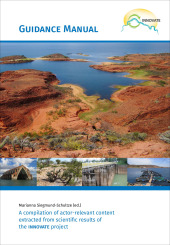Die planerische Umsetzung des naturschutzrechtlichen Vermeidungsgebotes – eine Untersuchung an Verkehrswegeplanungen in Berlin und Brandenburg

Format: 14,8 x 21,0 cm
Art. 19 (1) Federal Nature Conservation Act regulates that any avoidable impairment of nature and landscape is to be pursued. As yet, there have been no empirical investigations on how the impact mitigation requirement under nature conservation law is implemented during the planning and approval process. This gap of knowledge could be closed by the present dissertation thesis. A representative study of 67 transportation projects (roads, railways, waterways) in Berlin and Brandenburg was carried out to assess objectively the effectiveness of the impact mitigation requirement. The engineering optimizations of the projects and the landscape management measures avoiding or mitigating adverse effects of the project were identified in the approval documents (written statements and development mitigation plans). In addition, the following questions were investigated: What contribution do the organizations and agencies involved in the hearing process make to the implementation of the impact mitigation requirement? What legal and technical framework is considered to be beneficial? This study demonstrated that mitigation arrangements are widely intended for transportation projects and that the different project developers indeed fulfill their legal obligations. The engineering optimizations are especially effective because they produce the release of almost all natural assets through mitigation of impairments due to installation. The engineering optimizations represent about one-quarter of the precautions of the project developers. Landscape management measures (about three-quarter of the arrangements) are generally conducive to the mitigation of impairments due to construction. A little less than one-fifth of the precautions of the project developers mitigated operational impairments. By analyzing the planning approval notices, the study showed that the organizations and agencies involved in the hearing process also contribute to the mitigation measures. For this reason they have an important share in implementing the avoidance requirement. All in all, demands for mitigation measures of impairments due to construction outweighed the objections and comments. Many measures that reduce the effect of cutting off as well as wildlife conservation measures were sent back. Further need for action is required to resolve these conflicts. Overall, the implementation of the impact mitigation requirement under nature conservation law is nearly complete and sufficient objectively in technical and legal terms. Manuals and instructions for action of the sector planning and nature conservation agencies, as well as the comprehensive statutory provisions for participation during the planning approval procedure and the multitude of standards and technical rules have a positive impact on the implementation of the avoidance requirement.



